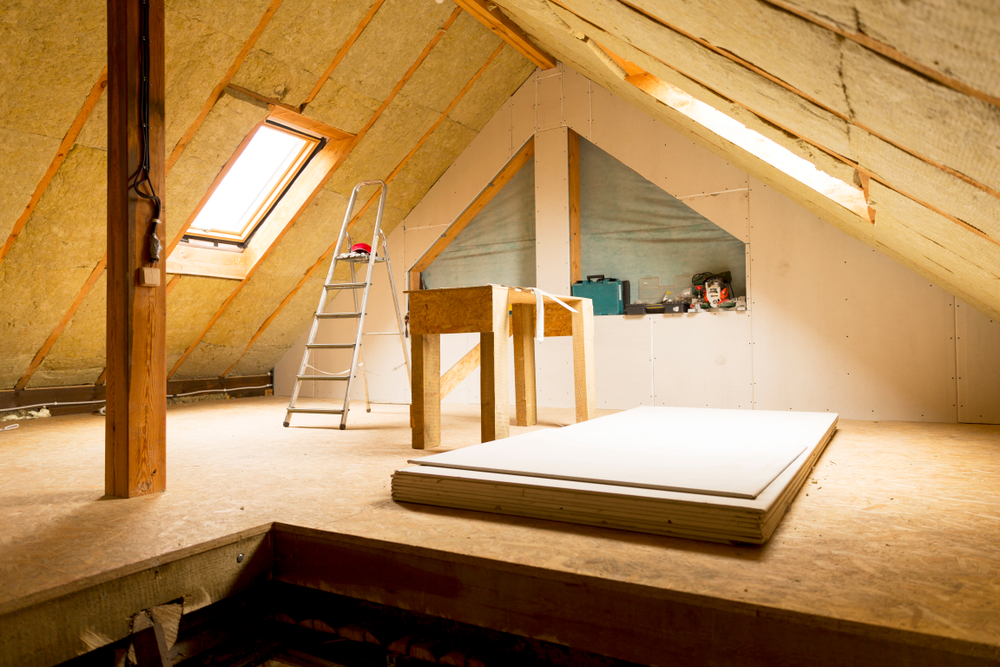
Is Spray Foam Insulation Good for Attics?
Fluctuating temperatures inside your house can be a serious problem. The last thing you want is to deal with constantly cool floors that feel uncomfortable every time you walk barefooted. Among the numerous solutions available to such an issue, you can contact Stellrr Insulation & Spray Foam: Austin attic insulation professionals. They have the expertise needed to resolve such problems and many more.
Better Insulation for Your Attic
Whenever there’s a debate about the importance of spray form insulation for attics, it helps to understand a homeowner’s dilemma as far as temperature control goes. For many homeowners that resort to using spray foam insulation, regularly high energy expenditures are the things that highlight this issue. An attic that’s poorly insulated tends to put a strain on the house’s heating, ventilation, and air conditioning (HVAC). The HVAC works harder just to control temperatures inside the house. Even then, this may not be enough due to the inefficiencies created by the poor insulation.
To install spray foam installation, the blown-in insulation has to first be removed from the attic floor to clear space. According to many roofers, spray foam insulation works best on ceilings made of plywood. The spray foam is sprayed on the attic deck. Usually, about 5 inches of foam is needed for optimal results. The spray foam insulation helps to control temperatures inside the attic, and house in general, by stopping heat at the roof deck.
Types of Spray
There are two types of spray foam insulation:
i) Open-Cell Spray Foam: This is made of polyurethane and isocyanate. Polyurethane makes up 50% of its composition. Open-cell spray foam is ideal for dark places like attics. Elements like sunlight and water quickly make it degrade. Its expansion rate is phenomenal, being able to do so up to 100 times its original size. This makes it ideal for an attic, a place that’s usually riddled with nooks and cracks that make overall temperature control challenging. A relatively small amount of it can cover a fairly large attic area. Being cheap, it is optimal for an attic that’s causing a lot of temperature regulation issues. Even when there’s a leaking roof, the open-cell spray foam doesn’t retain moisture. The joists and trusses of a roof deck are places where tiny holes tend to develop, meaning spray foam insulation becomes necessary to cover them up. If spray foam insulation is ever in need of repair, its ease and pliability mean that any repair work won’t be difficult.
ii) Closed-Cell Spray Foam: This is the choice for many homeowners when it comes to insulating their attics. Many people prefer it because of its rigid structure that, unlike the open-cell type, doesn’t allow water to seep through. The rigidity that makes it a great option for covering up holes also makes it expand less. For both types of spray foam insulation, the R-value is of importance.
The R-value is a measure of how well (or not) a material is suitable for insulation purposes. It is closely tied to a material’s thermal resistance—its ability to conduct heat or resist its loss. The higher the R-value, the more resistant a material is to heat loss. This is the ideal characteristic of good insulation material.
The closed-cell spray foam has a high R-value, higher than the open-cell type.
This is why many people prefer it for insulation purposes. The closed-cell spray foam insulation is ideal not only for attics but also for subfloors, ensuring that moisture levels are kept in check.
Both the open-cell spray foam insulation and the closed-cell type may be ideal for some scenarios. For instance, if you’re a homeowner that wants a little more “breathing” for your attic walls, the open-cell spray foam insulation is ideal. For those that prefer more wall rigidity, the closed-cell spray foam insulation is better.
The closed-cell spray foam is more expensive. It costs around $1.30 to $2.90 per board foot. The open-cell spray foam of identical dimensions goes for between $0.60 and $1.30.
Avoiding Mistakes
As with any home improvement project, it’s always best to hire professionals to do your spray foam insulation. Even when you have some experience with such matters, it’s always best to check in with industry experts. This helps you avoid making costly mistakes. For instance, using spray foam insulation can void your roof warranty, even when used solely in the attic. It’s always best to check in with your insurance provider to avoid running afoul of the terms of your house insurance.
All in all, spray foam insulation can be a fantastic choice for your attic. It ensures that your HVAC works less.



